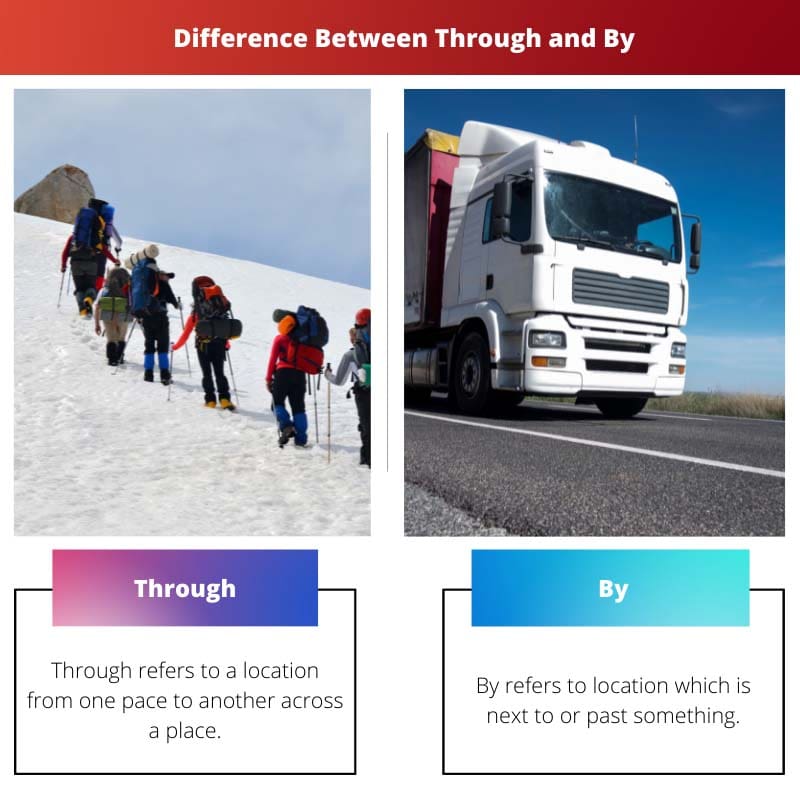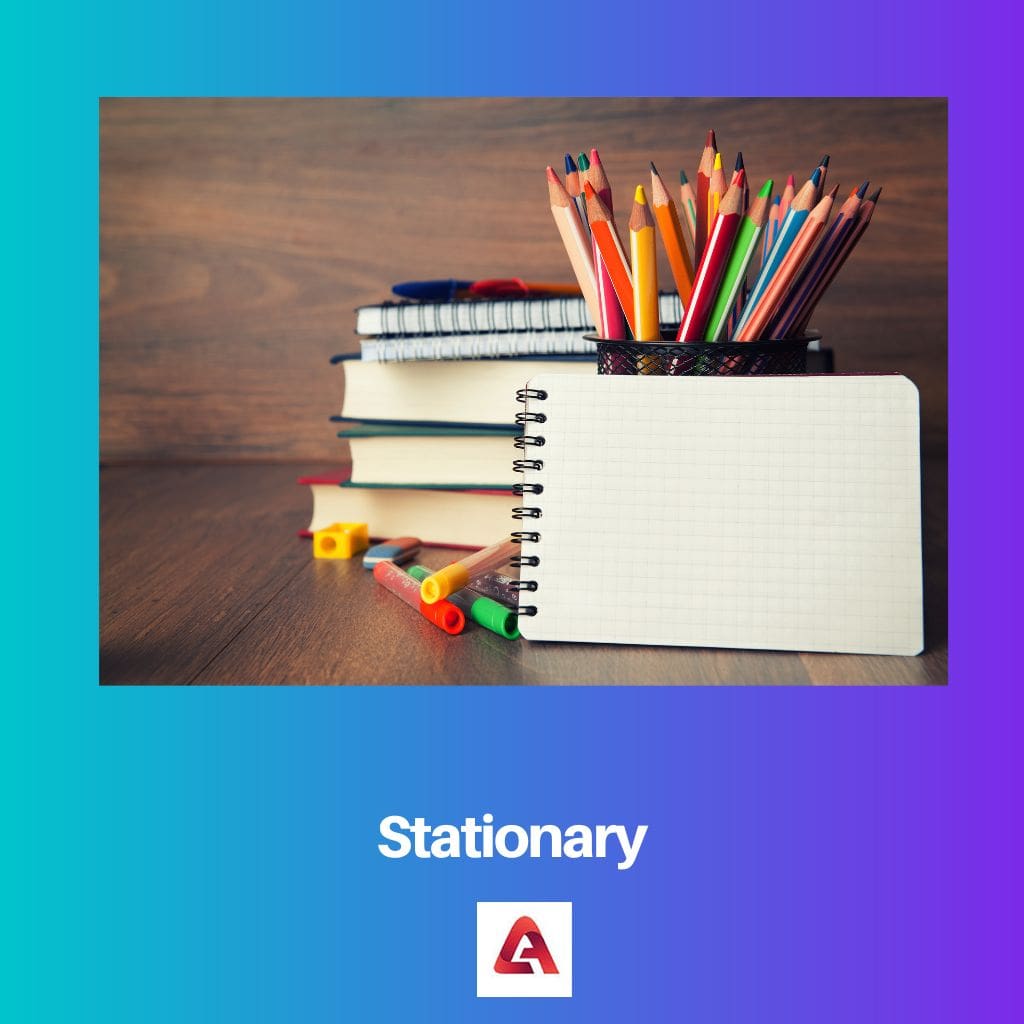“Through” implies movement within or across a medium, such as passing through a tunnel. On the other hand, “by” indicates a method or means, like achieving a goal by a specific process. Choose “through” for physical penetration and “by” for indicating a method or manner.
Key Takeaways
- “Through” indicates movement within or across a space, while “by” shows proximity, means, or agency.
- “Through” can also express a continuous period, while “by” can denote a deadline or the latest point in time something should happen.
- “through” and “by” are prepositions, but they are used in different contexts to convey different relationships between words in a sentence.
Through vs By
Through describes a route that passes through two different locations. It describes how far something extends. Through refers to or describes the process of an activity. While “by” implies a place, such as next to or behind something. By is used to describe any item’s dimensions, weight, or margin.

Comparison Table
| Feature | Through | By |
|---|---|---|
| Meaning | Movement from one side to the other | Means, agent, cause, or instrument |
| Movement | Emphasizes passage or completion of a path | Doesn’t necessarily imply movement |
| Time | Often indicates duration or process | Indicates completion or point in time |
| Cause/Agent | Can imply cause or source, but not always | Clearly emphasizes cause or agent |
| Examples | He walked through the park. (movement) | We built the house by hand. (agent) |
| Similar meanings | Across, throughout, during, in the course of | With, on, via, on account of |
| Antonyms | Around, outside, beyond | Without, except, other than |
When to Use the Word Through?
Usage of “Through”
1. Spatial Movement:
- Example: He walked through the forest.
- Explanation: “Through” is used to denote movement within or across a medium, indicating spatial penetration or passage.
2. Completion or Continuation:
- Example: She persevered through difficult times.
- Explanation: “Through” can convey completion of a process or continuity despite challenges.
3. Expressing Time:
- Example: We worked through the night.
- Explanation: When used with time, “through” indicates duration or continuous action within a specific period.
4. Means or Method:
- Example: Solve the problem through collaboration.
- Explanation: It implies achieving a goal by a specific process, method, or means.
5. Approval or Agreement:
- Example: The proposal passed through committee approval.
- Explanation: “Through” can signify the successful progression or acceptance of something, like an approval process.
6. Expressing Medium:
- Example: The sunlight filtered through the curtains.
- Explanation: It is used to describe passage or movement within a medium, such as light passing through an object.

When to Use the Word By?
Usage of “By”
1. Indicating Method or Means:
- Example: She succeeded by working hard.
- Explanation: “By” is used to denote the method or means through which an action or result is achieved.
2. Showing Time or Deadline:
- Example: Submit your report by Friday.
- Explanation: It signifies a deadline or a specific point in time by which an action should be completed.
3. Authorship or Creation:
- Example: A novel by Jane Austen.
- Explanation: “By” is used to attribute authorship or creation, indicating the person responsible for something.
4. Passing Near or Through:
- Example: We drove by the park.
- Explanation: When used in the context of movement, “by” can indicate passing near or through a location.
5. Multiplication or Rate:
- Example: Multiply 5 by 3.
- Explanation: In mathematical contexts, “by” is used to represent multiplication. It can also indicate a rate or ratio.
6. Agent in Passive Voice:
- Example: The book was written by the author.
- Explanation: In passive constructions, “by” introduces the agent or doer of the action.
7. Expressing Means of Transportation:
- Example: Travel by train.
- Explanation: “By” can indicate the means of transportation, specifying how someone or something is moving.

Main Differences Between Through and By
- Spatial Movement:
- Through: Implies movement within or across a medium, such as passing through a tunnel.
- By: Indicates passing near or through a location.
- Completion or Continuation:
- Through: Conveys completion of a process or continuity despite challenges.
- By: Denotes achieving a goal by a specific process or method.
- Expressing Time:
- Through: Indicates duration or continuous action within a specific period.
- By: Specifies a deadline or a specific point in time for completion.
- Means or Method:
- Through: Used to achieve a goal by a specific process or means.
- By: Denotes the method or means through which an action or result is achieved.
- Approval or Agreement:
- Through: Signifies successful progression or acceptance, such as approval.
- By: Can indicate the approval process or the agent responsible in passive constructions.
- Attribution:
- Through: Used in contexts related to authorship or creation.
- By: Attributes authorship or creation to a specific person.
- Passage or Movement within a Medium:
- Through: Describes movement or passage within a medium, like light passing through an object.
- By: Can indicate the means of transportation or movement through a location.
- Multiplication or Rate:
- Through: Not used in mathematical contexts for multiplication or rate.
- By: Represents multiplication and can indicate a rate or ratio in mathematical contexts.





